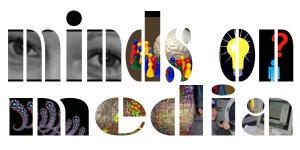The Day of Plan B’s
You know those days when nothing works out as planned? I mean…. NOTHING? We had one of those days this week. My colleague Jim Carleton aptly named it The Day of Plan B’s (and plan C’s and plan D’s). We had two classes on either side of the school board (about 90 km apart) who were co-teaching a math lesson together. The plan was to use the Polycom video conferencing equipment for the introduction which included discussing the situation in Haiti after the earthquake, showing photos of the destruction and then sharing the video Waving Flag. After the introduction including a discussion of 3-D shapes and some of the characteristics, the classes were to break into groups. Two students from each classroom were on a computer in Adobe Connect and were going to work with a pair from the other class. Their task was to design 9 buildings using 3-D shapes and then the birds eye view of their rebuilt village for Haiti. They had to choose the buildings that were most important to Haitians (not our students, so for example, most included a church). This was day one. Over the next week the Grade 6 class was going to use Geometers Sketchpad for some further activities with their 3-D buildings and the map of the village. The Grade 4/5 class was going to build the buildings using nets. They would then reconnect with their partners to consolidate the activity.
So, day one, myself and Jim are on either end of the video conference with the teachers. I get a text message “we have no v/c lets use Adobe Connect for the introduction”. The polycom wasn’t working. Ok, so we connect to an adobe room and get going. The microphone on one of the computers isn’t working. And, my computer on the guest wireless won’t connect to adobe connect at all. Ok, so there goes plan b. We ended up doing a teleconference with two iPhones. On each end we plugged the phones into speakers, skype called each other and then shared the lesson via adobe connect shared screen on the computer without a microphone. And it actually worked. Kinda.
When the time comes for breakout groups the students all go into three adobe connect rooms. We frantically tried to get them all into the correct breakout rooms and the grade 6’s sharing the SMART notebook file with their grade 4/5 partners. With all the time we had lost problem solving the video conference we ran out of time and never got the students into the right break out rooms. They ended up just introducing themselves in the chat and connecting with each other. In the end, it was the biggest lesson fail ever, yet we were all still smiling and laughing. The teachers we are working with are awesome!
The next day we tried take 2 and made a few changes. First of all we remembered to bring the replacement camera for the polycom unit we were supposed to bring in the first place  Then, we decided break out rooms weren’t our best choice for this project and created 12 separate adobe connect rooms and then assigned them to the partners. We also decided that we didn’t need the SMART notebook file, the students could simply share right on the whiteboards within adobe connect. These were saved and we could go back to them when needed.
Then, we decided break out rooms weren’t our best choice for this project and created 12 separate adobe connect rooms and then assigned them to the partners. We also decided that we didn’t need the SMART notebook file, the students could simply share right on the whiteboards within adobe connect. These were saved and we could go back to them when needed.
I couldn’t make take 2, I was elsewhere, but I got a text message around lunchtime from one of the teachers saying “it worked awesome!”. Looking into the adobe connect rooms after the students had left I can see the chat and whiteboards displaying their work. They did some really neat things and came up with great ways to decide which student was doing which job. The way I figure it, we are always taking with students about persistence and perseverance. Well, this sure was a great example.  The day of plan B’s continued on way beyond this failed lesson and into the afternoon, but of course… a little creative problem solving got us where we needed to go.
The day of plan B’s continued on way beyond this failed lesson and into the afternoon, but of course… a little creative problem solving got us where we needed to go.

